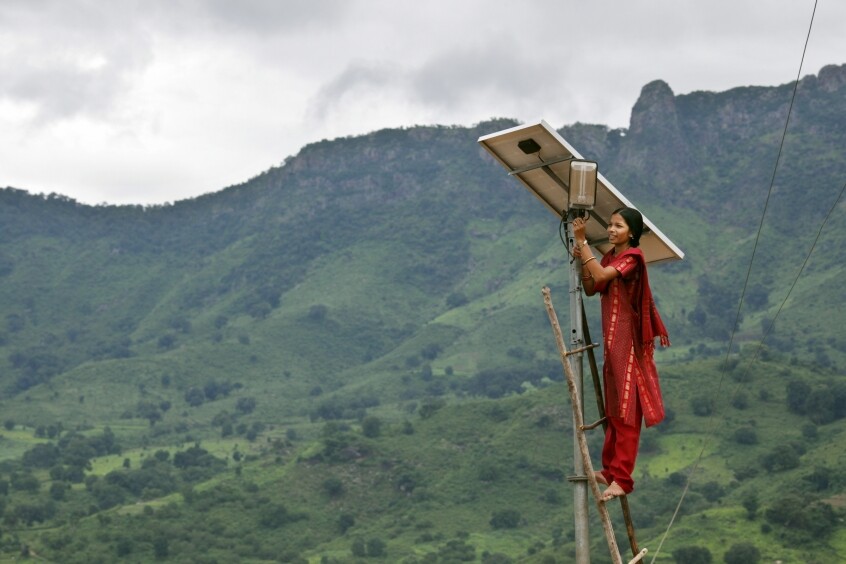
(From left) Doctoral student Hannah Yamagata, research assistant professor Kushol Gupta, and postdoctoral fellow Marshall Padilla holding 3D-printed models of nanoparticles.
(Image: Bella Ciervo)

In 2000, 43 percent of India’s population had electricity. Today, electricity now reaches 82 percent. If this pace is maintained, India will achieve universal access in the early 2020s, and achieve one of the largest successes in the history of electrification, according to projections from the International Energy Agency.
India has recently advanced the successful electrification of nearly 18,000 remote villages in some of the country’s most inaccessible parts, and half a billion people in India have gained access to electricity.
Today, India’s leadership faces a difficult balancing act. It must keep villages energized with reliable power while delivering energy in the most sustainable way. For India, with its existing mix of resources, the resulting approach is to use both renewables and coal (delivered to power plants by railway).
This year’s Carnot Prize—which the Kleinman Center for Energy Policy will announce next week—provides a “teaching moment” to explore the ideas behind a just and sustainable energy transition and the common but differentiated responsibilities among nations to mitigate effects of energy systems on climate change
A sustainable transition must avoid the worst effects of climate change by ensuring that global emissions peak quickly and fall steeply in coming decades, staying within a global “carbon budget” of emissions released into the atmosphere.
Read more at the Kleinman Center for Energy Policy blog.
Michele W. Berger , Lindsey Samahon

(From left) Doctoral student Hannah Yamagata, research assistant professor Kushol Gupta, and postdoctoral fellow Marshall Padilla holding 3D-printed models of nanoparticles.
(Image: Bella Ciervo)

Jin Liu, Penn’s newest economics faculty member, specializes in international trade.
nocred

nocred

nocred